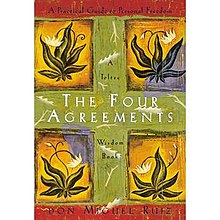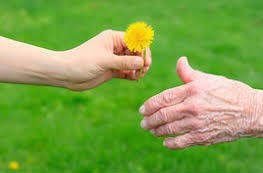Take a look at these covers of different autobiographies and see how the nine personality styles of the Enneagram allow insight into their famous authors. Of course, these are guesses into these authors’ Enneagram styles, but they are guesses that could lead to a deeper understanding and appreciation of them. Just like knowing your own Enneagram style can lead you into knowledge of yourself. Perhaps if you don’t know already, you can read with even more discernment to find your own Enneagram style amongst the 9.
The “nine points” of the Enneagram have become popular, not just with coaches and other mental health professionals, but also with groups of friends at dinner parties and weekends away. The Enneagram helps figure out where others are coming from and can give us more patience and respect for each other.
Each of the 9 different Enneagram personality styles view the world with a particular lens coming out of their own core fear or motivation. Enneagram practitioners can be skilled at guessing the style someone resonates with using very little information. For example, if you had to write the story of your life, what title would you give it? Just looking at the front cover of your printed book could reveal a lot more about you than you think.
9

“Dreams of My Father” suggests someone who might dally in flights of fancy and in the foregrounding of someone else, even in their own autobiography. The cover picture shows not just the gentle-eyed Barack looking away from the camera, but also other family members suggesting their perspectives in this autobiography are also present. The Enneagram 9 will often rather take the perspective of others, rather than claim their own. Of course this can be unhealthy, making them fall asleep to themselves, or healthy in leading to the peace that is a central motivation of their type. As Obama himself concluded in 2009 in his remarks to a student roundtable in Turkey: “Learning to stand in somebody else’s shoes, to see through their eyes, that’s how peace begins.” Barack Obama is American politician who served as the Democratic president of the United States from 2009 to 2017.
8
“Not Without a Fight” makes it pretty clear that the author is not willing to let things go and is ever prepared to take a stand on what she believes in. In the photograph, Helen Zille makes direct and challenging eye-contact with her photographer as if looking down or away could be a sign of weakness.
The Enneagram 8s are known for their need to be strong and their appetite for battle. In fact, Enneagram 8s often intentionally try to provoke people, especially those unknown to them as a way to get a measure of their mettle, and bring authenticity into the encounter. Helen Zille is a South African politician who served for 2 terms as premier of the Western Cape. She is known for her tough stances, for example on cracking down of crystal meth and her incendiary tweets which have led her into infamy.
7
“When I stop talking you’ll know I’m dead: Useful Stories from a Persuasive Man” is a long-chewing mouthful of a title presenting a dazzling raconteur on the run from time itself. Indeed, in the picture Jerry Weintraub is on the move, dressed with all the glamour of a tuxedo but with the bow tie undone as if ready for a party or informal encounter. Enneagram 7s pack their already full lives, forever with a fear of missing out and avoiding any kind of pain, especially the pain of boredom. Jerome Charles Weintraub was an American film producer, talent manager and actor who got himself out of the mail room with “the life changing magic of acting “as if,”” and the willingness to be lucky (Awosika, 2019).” Enneagram 7s are known for winging it and their assurance of their seat at the table of abundance.
6

“My point and I do have one” as a title asserts something, the “having” of a point, and the possibility of not having a point in the same seven words. The very young Elllen Degeneres with a disarming smile, looks at the viewer intently as if to try and discern whether they can truly be trusted. Enneagram 6s are known to be contrary: Whatever is true about them, so is the opposite. Warm and loyal to their people, they are also wary and sceptical. Perhaps something of Ellen’s coming out as gay illuminates the style of the 6: Ellen DeGeneres was starring as “the girl next door” in the Ellen show, sweet and compliant. Then in what was seen as a rebellious move in 1997, Ellen came out as gay. Now “the lesbian next door” (Weaver, 2017 Vanity Fair), a year later the Ellen show was canned and Ellen called “degenerate,” a scapegoat for a truth about human sexuality mainstream society was not willing to accept.
5
“Alone on the Wall” is almost startling in the way it foregrounds being, well, alone – without company. And there, contextualized by the massive rock face and mountains is the picture of the solo climber Alex Honnold, climbing not only without a buddy but also without any kind of gear or ropes. This kind of scenario really works for many Enneagram 5s as they minimise their needs in order not be dependent. Dependence could lead to being coerced and coercion they hate. In his camper van, Alex lives a minimalist lifestyle eating cans of beans for supper. Then there is the wall. Literally a massive kilometer high slab of rock which keeps Alex separate from the world. Walls work for Enneagram 5s: They often have a place to retreat with a sturdy door behind which they are very comfortable saying “no”.
4

The title, “I know why the caged bird sings” is first a reminder that a caged bird will hanker for that absent freedom, will hold it like a lost symbol, as depicted by the brilliant gold bird on the cover. In fact, American singer and civil rights activist Maya Angelou selected the title of her book from a poem by Paul Laurence Dunbar where the caged bird sings not from “joy or glee, but a prayer that he sends from his heart’s deep core”. Enneagram 4s often hunger for a vanished time when the world was whole and are forever yearning for something that they don’t have. It is also typical for an Enneagram 4 to create meaning out of painful experiences and turn them into art as Maya Angelou has done with her 7 autobiographies. “Caged bird” is the first of these where she refines and distils her experiences of rape and racism into a creative work.
3
“Simply Rich” is a title that not only emphasises Rich DeVos’s wealth, it makes him synonymous with that wealth. Indeed, Enneagram 3s are known to be manifesters – they set big goals for themselves and focus on looking good and being the best. With the values of our society, this often means being the richest. Rich DeVos is the self-made billionaire and was the co-founder of Amway, the company that uses “multilevel marketing techniques” to sell cosmetics and household products. The smiling casual DeVos on the cover implies that the acquisition of his money was as uncomplicated and as simple as he is himself. Less healthy Enneagram 3s can be known to overlook some of the “short cuts” or not-quite-so-honest-dealings that have led to their success. There are for example, many criticisms of Amway, specifically that it has duped and swindled ordinary people. Whether true or not, there is something disingenuous about the “simply” in Rich deVos “Simply Rich.”
2
The Enneagram 2 is devoted to meeting the needs of others. In this autobiography Zelda la Grange describes how she came to be the one to anticipate and fulfil the every need of the world statesman and South African liberation president Nelson Mandela. There are many twos sitting just behind the throne, grooming and soothing, nurturing and caring. “Good morning, Mr Mandela” is a fitting title for the autobiography of a two whose first thought is to keep “the other in their life” happy and served. The photograph of Nelson talking into Zelda’s ear also works well for an Enneagram 2 for 2s are about closeness and love, and always ready to hear the needs of the other they are dedicated to serving. In the book Zelda describes her rage at the way the Mandela family treated her after his death, quite justifiable of course, but also typical of the Enneagram 2 who can sometimes feel unappreciated and unacknowledged for all the work that they do for others.
1
“An Orderly Man” is an apt title for the autobiography of an Enneagram 1: Ones pursue perfection and order, they seek detail and completion. The cover design of precisely placed type writers speaks to this orderliness. Dirk Bogarde was an English actor and writer, born in 1921 and dying 1999. He came to prominence in films such as The Blue Lamp and Death in Venice. When he was appointed Bogarde’s official biographer, John Coldstream discovered that the actor’s many memoirs served only to obscure the truth about his life. This may have been because Dirk was gay in a time when homosexuality was deemed by society to be illegal and immoral. This puts an Enneagram 1, who must always be right, into a terrible predicament. Coldstream writes that Bogarde had a terror of losing control: “In discarded notes for his first book he wrote of this dangerous, detestable thread in his make-up that might one day do him harm: “I judged it to be a form of weakness, femininity, softness. Abhorrent.” This kind projective identification is a common defence mechanism for Enneagram Ones. Dirk never came out.
At the least, the Enneagram gives a glimpse into why we love these recognizable characters and an appreciation of our diversity. What is really tempting, however, is that the Enneagram can offer a short cut for growing up and getting out of our own personality “boxes.” And we can guide our clients to do the same. Certainly, in knowing the Enneagram, coaches and psychologists, and anyone working with people development, have gained a powerful tool for assessing and mapping a way to work with individuals and the diversity in groups.
Jo Monson is an Enneagram Practitioner and Professional Certified Coach with the ICF.
(This article was first published in a slightly different version in SA Coaching News, Volume 1, Issue 9, September 2019)


















